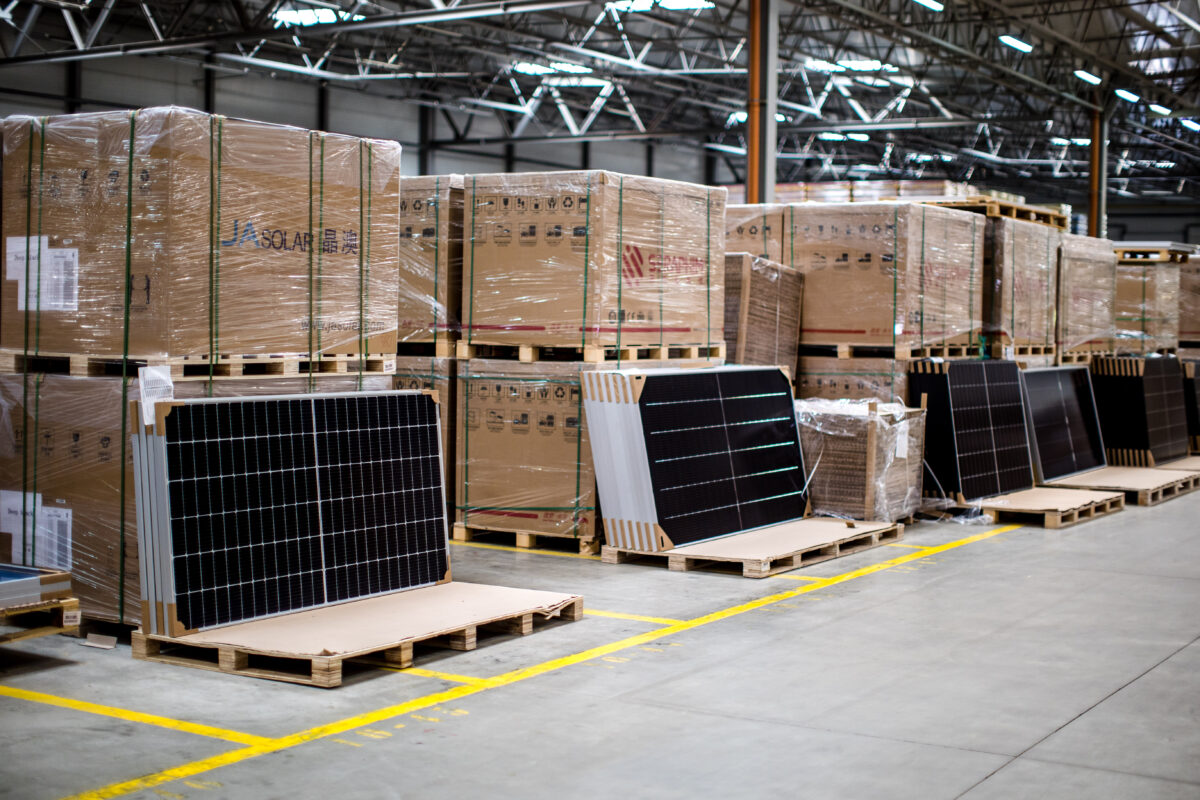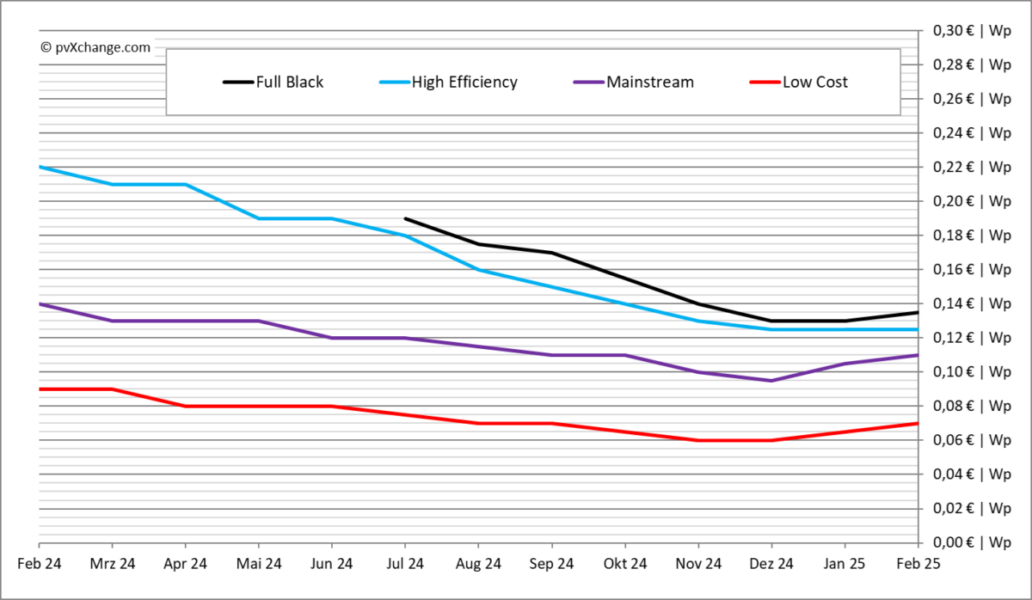Poland was Europe’s third-biggest solar market in 2022, with 4.9 GW installed. What can we expect this year?
It will be different. Last year, around 80% of new PV installs came from the residential market segment. This year, there will be two factors limiting its growth. First is the switch from net metering to net billing announced last spring, and the second is the government’s decision to freeze electricity prices for consumers who stay within certain levels of electricity consumption. Namely, the government has set up three levels of the energy consumption at 2000 kWh, 2600 kWh and 3000 kWh/year, with the last one reserved for big families, farmers, and senior citizens. Those who do not exceed these limits will stay with energy prices from last year, and the rest will pay the new prices which are 20% to 22% higher. It is expected that not many households will be able to stay within these limits, but nonetheless the very information about frozen prices has already cooled demand.
Meanwhile, we are seeing a growing demand on the commercial and industrial (C&I) side driven by two factors: the electricity prices have not been frozen for them, so they are exposed to market prices that are quite high, and also companies are under pressure to decarbonize under initiatives such RE100. In a nutshell, I hope that the market will maintain the last year’s volumes, but the growth will be driven by the C&I sector rather than the residential one. For example, Poland's leading provider of photovoltaic solutions for business Quanta presently has over 100 MW of pure C&I PV projects in their pipeline.
You mentioned the transition from net metering to net billing, which initially had a strong negative impact on the market – some companies even reported bankruptcies. Has the market adapted to this change?
Before the switch, people were panic buying. If you look at our residential sales in Poland, 80% of it happened in the January-March period. In April, the market simply vanished. In May, activity started to pick up slowly. But by this point, people have already realized how net billing works, so this is no longer holding them back from installing solar as it did in the first place. In case of Menlo, Poland represents 30% of our revenues so we didn’t feel the pinch since at the time we had strong demand coming from Germany, Baltic states, and southern Europe.
Solar was the main winner in the most recent renewables auctions, but overall uptake was disappointing, as big, unsubsidized PV projects have started to gain market share. What can we expect from the utility-scale PV market in Poland?
This is very difficult to say. Putting aside the local legislation, there are two factors to consider. The significant price drop for solar modules driven by the falling polysilicon prices has created a strong expectation of decreasing price trends, so investors are reluctant to buy now and are waiting for further price declines. Meanwhile, there is a large gap in supply of large-scale inverters. So, market leaders like Sungrow and Huawei still have backlog of orders from last year that will be fulfilled no sooner than September or October this year. These two factors are extending the planning phase for another six to nine months and slowing down utility-scale PV development in Poland.
 As a leading distributor in Poland, what does Menlo Electric see in terms of tech preferences among project developers?
As a leading distributor in Poland, what does Menlo Electric see in terms of tech preferences among project developers?
Customers are after new technologies that can secure bigger efficiency and yield. In terms of PV modules, for example, around 95% of our JinkoSolar offers are their n-type TOPCon products. The latest TOPCon products stand for higher efficiency (up to 23%), longevity (30 years), and low degradation (only 0,4%/year). What is especially important in markets such as Poland, UK and Scandinavia, which are more shaded than the rest of the Europe, is the better weak light response that such modules are capable of, adding an extra two hours of production a day.
Meanwhile, large-scale inverters with 350 kW power have attracted much attention, but they have not been widely available so we cannot talk a lot about their benefits. Meanwhile, this year FoxESS, Sungrow, and SolarEdge have successfully introduced hybrid inverters together with storage solutions which already represent 60-70% of our inverter sale. We are fully stocked with FoxESS and Sungrow hybrid solutions and can deliver them all across Europe within five working days. However, Polish households are still reluctant to install batteries and are likely waiting for substantial government support. But we are seeing that the C&I and utility-scale projects are planning batteries and are already installing hybrid inverters. We also expect demand for microinverters to accelerate in Poland and we stand ready to cater to it with TSUN products.
Menlo Electric launched its Energy to Power Your Future charity program last year to provide free PV installations for institutions that take care of children in Ukraine. What is happening with this project?
We signed the contract for 10 installations, with a total of 300 kW of power. We are about to commence the first installation on the children’s hospital in Chernigov, in northern Ukraine. We have already secured components for another two installations thanks to the support of our partners Deye and FoxESS. Previously, we delivered free-of-charge installations in Poland, Romania, and soon Bulgaria. Our business partners, such as JinkoSolar and Sungrow, we're all very interested in partnering on such charity initiatives and willing to help.
This content is protected by copyright and may not be reused. If you want to cooperate with us and would like to reuse some of our content, please contact: editors@pv-magazine.com.




4 comments
By submitting this form you agree to pv magazine using your data for the purposes of publishing your comment.
Your personal data will only be disclosed or otherwise transmitted to third parties for the purposes of spam filtering or if this is necessary for technical maintenance of the website. Any other transfer to third parties will not take place unless this is justified on the basis of applicable data protection regulations or if pv magazine is legally obliged to do so.
You may revoke this consent at any time with effect for the future, in which case your personal data will be deleted immediately. Otherwise, your data will be deleted if pv magazine has processed your request or the purpose of data storage is fulfilled.
Further information on data privacy can be found in our Data Protection Policy.